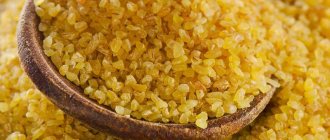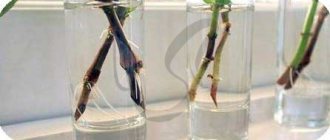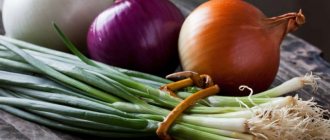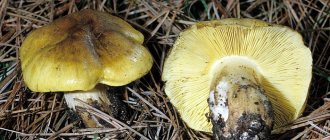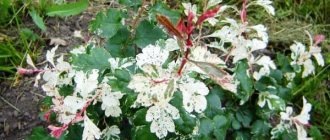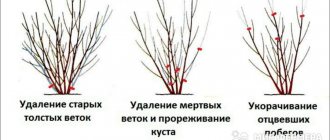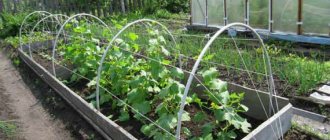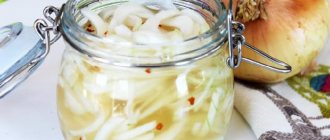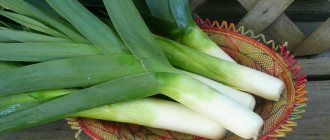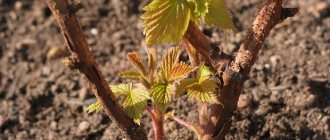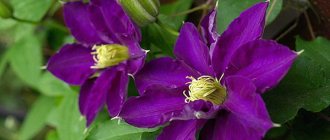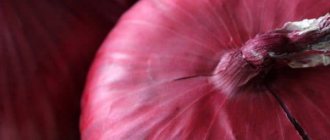Jusai: what is this? Useful properties of jusai
Those of us who are the proud owners of a plot of land are often in search of interesting and useful plants that can be planted on our land. We will tell you about just one of these. It is unpretentious and beautiful, but the main thing is, of course, its useful qualities. The name of this plant is jusai. Today we will talk about what it is, where it grows, how it is used in cooking, and how to grow jusai in your summer cottage.
Most cultivated plants did not appear without human participation. But jusai is a complete exception, because it grows and is used in its natural, original form. The plant is resistant to cold, does not require soil or special care, and pests and diseases avoid jusai. What it is? People call it differently: wild onion, Chinese, fragrant or branched onion, sometimes called field or mountain garlic or simply garlic onion. It is widespread in all corners of the planet, and sometimes grows right under your feet, in fields, meadows or rocky areas.
Dzhusai is often planted as an ornamental plant; it looks neat, and the thin, lively leaves have a rich, pleasant color. The plant requires virtually no care. It only needs to be watered occasionally and pruned several times a year so that the jusai acquires fresh, young foliage. But jusai is not only attractive for its appearance; the beneficial properties of wild onions are not inferior to their domesticated counterparts.
The herbaceous perennial Allium odorum or jusai belongs to the Onion family. Its leaves resemble garlic in appearance and can reach a length of up to half a meter. Their color range ranges from light to dark green, and the leaves themselves have a faint waxy coating. The root system is a false bulb. Every year the plant produces more and more young bulbs, growing into large families. Flowering occurs at the end of July. Dzhusay throws out flowering stems, which are crowned with spherical umbrellas of small white flowers with a delicate, pleasant aroma.
Growing wild onions
There is nothing easier than growing wild onions at home. However, it is not always possible to get a good harvest, because each plant must have its own climate and soil. So let's start with preparing the land. So, a wild plant does not like soil with high acidity, therefore, you should not expect a good harvest on such a surface. Green perennial feathers like neutral or slightly acidic soil, which is located close to water, but the bed should not be constantly wet.
When choosing a location, vegetable predecessors are also an important factor. The ideal bed for wild onions will be the one where tomatoes, cucumbers and potatoes grew last year. It is advisable to avoid such proximity: legumes, onions and beets. They have a negative effect on growing garlic-flavored grass and slow down plant growth.
The soil begins to be prepared in the fall. Initially, the ground is plowed, then weeds and debris are removed. Next, humus is added, which can be manure. Typically, about 8 kg of fertilizers are needed per square meter, but if your soil is already noble, then the amount of organic additives is halved. After this, the beds are dug up again and left until spring.
In early spring, as soon as the snow melts, the ground is plowed to a depth of 15-20 cm twice a month, until the seeds are sown. This procedure is carried out so that the soil is enriched with oxygen and becomes looser. A couple of weeks before planting, mineral fertilizers are applied. After all, it is precisely these land conditions that will help the planted onions to take root better and sprout faster.
Preparation and planting of material in open ground
There are two ways to grow onions: seeds and bulbs. Each gardener chooses the most successful option, which will give good germination in a certain climate. Let’s make a reservation right away that it doesn’t matter which planting method you choose, the main thing is that the soil is well moistened while cultivating the holes. Let's look at each growing method in more detail.
Seeds
The seeds are sown in the fall, so that with the arrival of spring, the first green onions can be collected from the beds. So, landing is carried out as follows. In mid-October, the seed is checked for germination; to do this, the planting material is filled with water at room temperature, left for an hour, then the result is observed. The floating seeds are thrown out, and those that have settled to the bottom are poured with a weak solution of manganese for 30 minutes.
Furrows are made along the moistened bed, the row spacing is 25-30 cm. Seeds are planted one at a time at a distance of 10-15 cm from each other. Gently sprinkle with soil and water again. If the weather is sunny outside and the rays fall on the garden bed, then the planting material is covered with agricultural canvas until the sun “hides”. Before the first frost, the bed is covered with mulch to prevent the seeds from freezing due to sudden temperature changes. In spring, the mulch is removed using garden tools, and the emerging greenery is fertilized with mineral or complex fertilizers.
Bulbs
You can also propagate a wild onion plantation using bulbs. It is advisable to plant onion turnips in early spring, when green shoots appear on the surface of the earth's crust. Young onions are taken out of the ground, divided into cloves and transplanted into a prepared bed in grooves at a distance of 20 cm from each other. A depth of 7 cm is considered ideal for planting large planting material; for small specimens, a depth of 2 cm is sufficient.
Plant care
Growing fragrant onions, Chinese garlic, wild garlic, bear onions or other types of wild onions is not difficult, the main thing is to choose the right care for the plant, after which you can eat fresh herbs for a whole year. It consists of weekly watering, loosening the soil, removing weeds, applying various fertilizers and timely harvesting.
Attention! During wintering, the beds are covered with a layer of mulch to prevent the plant from freezing.
Description and varieties of Thornfree blackberries, cultivation and care, bush formation
Why is it useful?
What beneficial qualities does jusai have, what is it, and how is it used? Only the above-ground part of the plant is eaten - grass and arrows with inflorescences. They taste and aroma resemble garlic. But onions have a mild taste and are practically not used for food, although sometimes medicinal tinctures are prepared from them. Wild onions are rich in vitamin C, which is why they are very useful for colds or weak immunity. It contains vitamins B1, B2, B5 and B6, K, E and beta-carotene. Allspice onions are rich in potassium, calcium, iron and sodium, contain sugar and essential oils.
This product is useful for people with cardiovascular problems, low immunity, colds, pneumonia, bronchitis, tuberculosis, gastritis, high fatigue and nervous disorders, it is used to prevent helminths. The plant has hemostatic properties and acts as a diuretic and choleretic agent. Almost all of us would benefit from including jusai onions in our diet. The photo perfectly conveys the beauty of this representative of the green world. This will decorate any garden or lawn, and can also be used in preparing almost any dish.
Jusay
Jusai is a plant from the Onion family with long green arrows, similar to the greens of young garlic . The smell and taste of jusai is also garlicky.
The homeland of jusai is Mongolia, China, but today it grows almost all over the world. Jusai is also called wild, branchy or Chinese onion.
You can use jusai for medicinal and culinary purposes, you can decorate your garden plot with it - thanks to the bright green leaves and small white star flowers that appear during flowering, the plant looks very impressive.
Onions are harvested throughout the summer and autumn, three or four times per season.
Useful properties of jusai onion
The leaves and inflorescences of jusai, which are also suitable for human consumption, contain vitamin C, so the plant is useful for the immune system, strengthening blood vessels, cartilage, nervous, endocrine and hematopoietic systems.
Jusai is recommended to be used for colds, as well as for those who suffer from heart disease, bronchitis, pneumonia, and tuberculosis. Separately, it is worth noting the diuretic, choleretic, hemostatic properties of wild onions.
The juice of jusai leaves helps with burns left by nettles and insect bites.
In Eastern medicine, the plant is used to treat neurasthenia, exhaustion, and gastritis.
Calorie content of jusai – 41 calories.
Dishes from jusai
Jusai can be eaten fresh, you can add it to main dishes, snacks, salads, and prepare sauces with it. You can use arrows, bulbs, and leaves of the plant.
Arrows can be pickled separately, or added to other homemade canned vegetables. The leaves can be frozen for the winter - they do not lose their taste, and after freezing the vitamins are preserved almost in full.
Here are a few recipes for dishes made from jusai:
1. Lagman is a traditional Uyghur dish. Jusai is a mandatory component of it. The basis of the dish is meat, and lagman is served with chuzma noodles. Additional ingredients are fat tail fat, green beans, tomatoes, bell peppers, carrots, garlic, onions, green radish, Dungan pepper, basil, green celery, jambul. Spices are important. The main ones are cilantro, star anise, black pepper. The lagman is prepared in a cauldron - it heats up, after which the fat melts in it. The ingredients of the dish are fried in fat over high heat in the following sequence: meat, onions, carrots, radishes, green beans, tomatoes, garlic, Dungan pepper, celery (put in whole, remove after cooking). After everything is fried, add a mixture of spices, paprika, hot red pepper, and stir everything. After the tomato juice has boiled away, add bell peppers (it is better to take multi-colored ones) and water - it should slightly cover the vegetables. After the water boils, you can reduce the heat and hold it for another 10 minutes. At this stage, add dzhusai - a large bunch, as well as jambul, basil and salt to taste . In a few minutes the lagman will be ready.
2. Korean salad with jusai. For the salad you will need two bunches of wild onions, bell peppers, onions, red pepper. Jusai is prepared in advance - sprinkled with salt, stirred and left for half an hour. After this, bell pepper cut into strips is added to it. Onions are fried in sunflower oil, hot pepper is added to it, and the resulting mixture is sprinkled with jusai. To fully prepare the salad, you need to keep it in the refrigerator for two hours.
3. Potato salad with jusai. This is a vitamin-rich summer dish made from dzhusai, easy to prepare: boil and peel young potatoes, cut them coarsely into six pieces, add chopped cabbage and cucumbers, greens - cilantro, dill, parsley, feather onions, dzhusai - a large bunch. Dress the salad with a mixture of olive oil and sour cream, add salt and pepper to taste.
Jusai can also be added to dumplings and manti, seasoned with soups, and onions can be used to fry meat dishes.
Contraindications
Jusai should not be consumed only by those who are intolerant to this plant..
People suffering from inflammatory diseases of the gastrointestinal tract, pancreatitis, cholecystitis, and cholelithiasis should eat wild onions with caution.
Did you like the article? Share with your friends.
Slide show
Use in cooking
What dishes can you add aromatic jusai to, what is it? Let's start with the fact that although this is a wild onion, it is still an onion. Therefore, it is mainly used in the same way as the familiar green leek. It can be added to salads and first courses, prepared as side dishes, and added to meat and fish dishes. Green onions are one of the first to appear in spring. It, like wild garlic, will help replenish vitamin reserves after a harsh winter. Chinese onion is good in pies fillings, sauces, it can be pickled, added to vegetables when canning, or you can simply freeze it for the winter. Wild onion inflorescences are used for tinctures, liqueurs and in making homemade wine.
Plant care
Caring for this type of onion is not difficult, but for its successful development you should follow a few simple rules of watering and fertilizing.
Watering
Ensuring proper and timely hydration is one of the important points when caring for vegetables. Despite the fact that it does not have any special requirements for watering, in the second year of growth it needs to organize abundant moisture at least 10 times per season, using about 30–50 liters of settled water at ambient temperature per watering.
In the first year, crops need to be watered every seven days, depending on the condition of the soil. At the same time, you should not be overzealous with irrigation measures, because in this case it is better to underwater the plant rather than overwater it.
Loosening the soil and weeding
The presence of a large number of weeds in the garden leads to the full development of onions. Parasitic plants take away nutrients and moisture from the vegetable, which negatively affects the growth of the root system and green mass. In this regard, experienced vegetable growers advise regularly, once a week, weeding. It is very important to carry out a similar procedure before the weeds enter the flowering phase.
In parallel with weeding, it is recommended to loosen the soil, which allows:
- enrich the earth with oxygen and nutrients;
- optimize air exchange processes;
- activate enhanced growth and development of root shoots of the crop.
Fertilizing
Effective feeding of Dzhusai onions allows you to improve its functioning, enhance growth, activate metabolic processes and ultimately obtain higher yields. The first portion of fertilizers must be applied in the spring, immediately after the formation of the first shoots. During this period, as a rule, urea is used, which is scattered over the bed, and Epin Extra solution, which is poured onto the seedlings.
Two weeks after the first feeding, it is necessary to carry out a second treatment of the crop using the drug “Ferovit”, which helps to activate the process of photosynthesis and the growth of green mass. It is very important to feed the plant after the harvest is complete.
Adding a mixture of potassium chloride, ammonium nitrate and superphosphate will strengthen the onion’s immune system and prepare it for the upcoming winter. In the next and subsequent years, to feed the crop in the spring, it is recommended to use a solution of chicken manure diluted with water in a ratio of 1:12.
Growing and care
This plant is a perennial, so by planting it once, you will get a strong, beautiful and useful jusai for several years. Growing and caring for it is kept to a minimum. It is not demanding of light or soil, and is not afraid of frost. But you should know that jusai does not like the land on which cabbage or potatoes were grown before him. It is necessary to change the planting site, thereby renewing the onion planting, no earlier than after 5 years. In general, caring for it is even easier than, for example, ordinary garlic or onions. It should be planted once in the spring, watered periodically and the leaves cut off. There is also no need to insulate the jusai for the winter. There is one more pleasant feature of this greenery - it is avoided by fungi and other diseases, and even the onion fly does not like it.
Article on the topic: Veronica key (coastal) - useful properties, description
From the moment of the first shoot in the spring until late autumn, wild onions will produce a harvest of fresh and fragrant foliage. It should be trimmed periodically, and sometimes the bed should be thinned out, then the plant will delight you with juicy young greens all year round. During the season, 3-4 prunings are carried out, the last one in August, before the onset of cold weather, the fragrant onions should have time to gain strength. It will also be useful after each such procedure to feed the soil a little and, of course, provide abundant watering. In the first year of jusai's life on your site, there is no need to prune; let it grow properly and gain strength.
Culture propagation
Lemon basil - growing and care
The perennial onion bush is easily propagated by division. For planting, plants need to be at least 3 years old so that they have time to form many bulbs. Having divided the plant into parts, they are planted in separate holes, pre-moistened. The distance between young bushes is maintained at about 30 cm.
If the onion bushes on the site are still young (or completely absent), but you want to get an extensive plantation, it is better to use the seed propagation method. Fortunately, faded umbrellas provide a lot of planting material.
Sowing seeds
If the location of wild garlic Dzhusai is a windowsill, the seeds can be sown at any time of the year. As for the beds, it all depends on the method: whether it is seedling or not.
Fragrant onions on the windowsill
If you sow directly in open ground, then this should be done in early spring - the crop is not afraid of frost, and the first shoots will already appear as soon as the air warms up to +2 degrees. In the prepared area, make grooves no deeper than 2 cm, moisten and distribute the seed evenly. In summer you can enjoy young onion feathers.
Growing seedlings
The seedless method is not entirely acceptable, as it gives poor germination. Therefore, it is better to prepare the sprouts in indoor or greenhouse conditions by sowing the seeds in a seedling box in the summer in order to plant them in the garden bed in September. And already in the spring of next year it will be possible to reap a bountiful harvest.
These works are preceded by the preparation of seeds. They are soaked for 2 days, filled with water at a temperature of 40 degrees. In a seedling box, you can thicken the planting, and then, when there are 2 normal leaves on the sprouts, thin out.
To grow seedlings, it will take 2 months, during which the sprouts are constantly cared for:
- make sure that the seedlings have enough light;
- You don’t need to water it often so that the bulb grows, not feathers;
- It is recommended to maintain a moderate room temperature and conduct frequent ventilation.
Jusai in the garden
Further planting of seedlings in beds requires adherence to the following scheme: 20 cm between sprouts, 30 cm between rows. The seedlings are buried in moistened holes, without pressing down the soil. When all the sprouts are planted, the bed is watered abundantly again.
Reproduction
It is very easy to start such a plant on your site; you will need seeds or bulbs. Both can be bought or collected on occasion if you happen to come across wild jusai. We will tell you in more detail how to grow it in these two ways.
You need to sow the seeds in the spring, when the ground has warmed up enough. It is different in each region, but in general, planting occurs in March or April. Before starting work, it is better to soak the seeds for a day or at least overnight. The swollen achenes are removed from the water, slightly dried and sowing begins.
The optimal depth for germination is 1-2 cm; usually jusai is planted in rows, leaving a distance of 30-40 cm between them. To do this, you need to make a furrow in the ground and sow the seeds, but not too densely. You can also plant using the nesting method. At a distance of a few centimeters from each other, make small depressions in the ground with your finger and drop a few seeds into each, cover with earth.
Jusai reproduces well from bulbs and has a strong root system. You will need to dig up a bush of fragrant onions and separate the onions, while trying to select the strongest, well-developed ones. Prepare the bed: loosen the soil, then make shallow holes and plant bushes. At the same time, try not to bury the plant too much; the ground level should be the same as last time. Lightly press the soil around the planted plants. This planting is good both in spring and summer, but in the fall it is better not to replant jusai. The onion may not have time to take root well and become stronger, and therefore a cold winter will be detrimental to it.
Jusai will begin to bloom in two years and produce an excellent harvest. This amazing plant will delight you not only with its lush greenery, but will also be an excellent decoration for your favorite dishes.
Features of planting and growing
In order for the cultivation of Jusai to bring a positive result, follow the basic principles of preparing planting material, the timing and scheme of its planting.
Onions can be grown by dividing the rhizomes or from seedlings, after sowing the seeds.
Preparing for landing
Seeds for seedlings require preliminary preparation:
- soak for 8 hours in water heated to +40°C, constantly maintaining this temperature;
- After the specified time, leave the seeds in slightly warm water for 48 hours.
The soil is dug up in the fall and fertilized, adding 10 liters of humus, 20 g of potassium fertilizers, 200 g of ash, 30 g of superphosphate per 1 square meter. m. At the beginning of spring, they dig again and add 5 g of ammonium nitrate per square meter. m.
Soil requirements
Jusai grows well in any soil except sandy soil. In this case, the onion grows tasteless, and its shelf life is significantly reduced.
Light, fertile soil with weak or neutral acidity, good moisture and air permeability is ideal. The best option is black soil, but peat bogs and loams are also acceptable.
Dates, scheme and rules of planting
The process of growing seedlings from seeds:
- Prepare the soil mixture by mixing equal parts of garden soil, peat and sand.
- Disinfect it by spilling it with a solution of potassium permanganate or heating it in the oven at +180°C for half an hour.
- Pour the prepared soil mixture into the selected container.
- Make furrows in the ground for sowing and place seeds in them every 3 cm.
- Cover the seeds with soil and lightly moisten it.
- Cover the container with polyethylene to create a greenhouse effect and put it in a well-lit, cool place.
The seedlings are grown for about two months, and when 3-4 leaves are formed on the sprouts, they are transplanted into open ground. Most often this is done in March-April, when the air temperature is +2°C, according to the following scheme:
- Make furrows in the area at a distance of at least 30 cm from each other.
- Water the soil generously.
- Make planting holes in the furrows every 20 cm.
- Place the sprouts in the holes, sprinkle them with soil without compacting it, and water generously.
If we are talking about dividing the bush, then it is done in spring or autumn, choosing the most developed, strong and healthy bulbs.
The operating algorithm is as follows:
- Dig up an onion rosette that is at least 3 years old.
- Divide it into several parts so that each has several developed and strong bulbs.
- Make furrows 5-8 cm deep in the soil and water the soil generously.
- Place the plots at a distance of approximately 20-30 cm from each other.
- Water the planted plants generously with warm, settled water.
In some areas, seeds are planted immediately in open ground, maintaining a distance between rows of 20-30 cm, deepening the planting material by 1-1.5 cm and sprinkling soil and humus on top. This is done in early to mid-March.
Reference. The seedless method is rarely used due to poor germination.
Features of cultivation
It is better to plant Jusai on the western or eastern side of the site - this way the plants will have enough light for good development, but direct sunlight will not dry out the soil and burn the leaves.
It is not recommended to plant onions after potatoes and cabbage; the best predecessors for them are legumes and pumpkin crops.
Experienced gardeners change the place where they grow onions every five years.
Nuances of care
Dzhusai is unpretentious, but requires minimal care, consisting of watering and fertilizing.
Watering mode
In the first year of planting, onions are watered rarely, only as needed - this promotes better rooting of plants.
In the second year, they water more often - at least 10 times per season, the water consumption is 30-50 liters per 1 square meter. m. If there is a lack of moisture, the feathers become rough and lose their juiciness.
Loosening the soil and weeding
The soil between the rows is weeded weekly, getting rid of weeds that take nutrients from the soil and retain water on the surface, preventing its access to the roots. All this negatively affects the development of onions and reduces its immunity.
Simultaneously with weeding, the soil is loosened to a depth of 5-8 cm. This procedure enriches the soil with oxygen and nutrients, improves air exchange, and enhances the growth and development of root processes.
Top dressing
In the first year of planting, onions are fed twice:
- in the spring, after the sprouts appear, use urea (1 tsp per 1 sq. m.) and spray the plants with Epin Extra solution;
- two weeks later - treatment with Ferovit to improve photosynthesis.
In the second and subsequent years in the spring, Dzhusai is fertilized with a solution of chicken manure diluted in a ratio of 1:12, and after each cutting of feathers, complex mineral fertilizers are added to the soil.
After complete harvesting, the land is fertilized with a mixture of potassium chloride, ammonium nitrate and superphosphate - this helps strengthen the onion’s immunity and prepares it for winter.
Disease and pest control
To reduce the risk of disease and pests:
- use high-quality planting material;
- monitor watering, avoiding waterlogging of the soil;
- take into account the rules of crop rotation;
- treat the seeds before sowing.
If signs of powdery mildew appear on the onion, it is sprayed with Profit Gold or other fungicides; insecticides help get rid of pests.
Description of the Jusai bow
The Jusai bow has the following characteristics:
- External characteristics
. Externally, Jusai is similar to garlic, thanks to its long (30-40 cm) narrow (5-6 mm) flat green leaves. After the development of the branched part, at least a year passes until the arrow with the flower appears. The flower stem grows up to 60 cm in height. During flowering (July-August), a spherical inflorescence of small star-shaped white flowers is formed. The rhizome is formed by small narrow (up to 1.5-2 cm) bulbs.
Taste qualities
. Has a garlicky smell and taste. No spice.
Homeland of the plant
. The territories of China and Mongolia are considered the homeland of the branched onion. However, currently this plant grows almost all over the planet.
- Growing conditions
. Jusai is a relatively unpretentious plant. In winter, under a small layer of snow, it can withstand frosts down to -45 degrees. In the summer, it can survive for a long time without watering, but the yield decreases. Beds with this onion can be located both in the shade and in sunny areas.
Contraindications
Among the contraindications:
- pathologies of the gastrointestinal tract (gastrointestinal tract);
- gallstones;
- inflammatory process in the spleen;
- cholecystitis.
The calorie content of this onion is slightly higher than other similar plants. One hundred grams of jusai contains forty kilocalories.
In addition to all the positive qualities, which are confirmed by numerous reviews, onions can serve as a decoration for your garden thanks to their bright green leaves and small white flowers called stars.
Useful properties of branched onions
The beneficial properties of Jusay are provided by the high content of ascorbic acid and potassium, as well as other components. Jusai is an excellent nutritious product that can be used to replenish essential minerals and vitamins.
The effect of Jusai on the body is as follows: hematopoietic, vascular-strengthening, choleretic, diuretic, antimicrobial.
Eating onions strengthens the immune system, stimulates the production of gastric juice, the hormone testosterone in the male body, improves the functioning of the nervous system and regulates water balance due to the potassium it contains. Zinc helps strengthen hair and improve skin structure. Calcium strengthens teeth.
Ailments for which the use of Jusai leaves or bulbs is recommended:
Diseases of the cardiovascular system;
Infectious diseases of the respiratory system (tuberculosis, pneumonia);
Nettle burns, insect bites, skin injuries accompanied by bleeding;
Violation of water balance in the body;
Jusay
Dzhusai is a plant from the Onion family with long green arrows, similar to the greens of young garlic. The smell and taste of jusai is also garlicky.
The homeland of jusai is Mongolia, China, but today it grows almost all over the world. Jusai is also called wild, branchy or Chinese onion.
You can use jusai for medicinal and culinary purposes, you can decorate your garden plot with it - thanks to the bright green leaves and small white star flowers that appear during flowering, the plant looks very impressive.
Onions are harvested throughout the summer and autumn, three or four times per season.
Useful properties of jusai onion
The leaves and inflorescences of jusai, which are also suitable for human consumption, contain vitamin C, so the plant is useful for the immune system, strengthening blood vessels, cartilage, nervous, endocrine and hematopoietic systems.
Jusai is recommended to be used for colds, as well as for those who suffer from heart disease, bronchitis, pneumonia, and tuberculosis. Separately, it is worth noting the diuretic, choleretic, hemostatic properties of wild onions.
The juice of jusai leaves helps with burns left by nettles and insect bites.
In Eastern medicine, the plant is used to treat neurasthenia, exhaustion, and gastritis.
Calorie content of jusai – 41 calories.
Dishes from jusai
Jusai can be eaten fresh, you can add it to main dishes, snacks, salads, and prepare sauces with it. You can use arrows, bulbs, and leaves of the plant.
Arrows can be pickled separately, or added to other homemade canned vegetables. The leaves can be frozen for the winter - they do not lose their taste, and after freezing the vitamins are preserved almost in full.
Here are a few recipes for dishes made from jusai:
1. Lagman is a traditional Uyghur dish. Jusai is a mandatory component of it. The basis of the dish is meat, and lagman is served with chuzma noodles. Additional ingredients are fat tail fat, green beans, tomatoes, bell peppers, carrots, garlic, onions, green radish, Dungan pepper, basil, green celery, jambul. Spices are important. The main ones are cilantro, star anise, black pepper. The lagman is prepared in a cauldron - it heats up, after which the fat melts in it. The ingredients of the dish are fried in fat over high heat in the following sequence: meat, onions, carrots, radishes, green beans, tomatoes, garlic, Dungan pepper, celery (put in whole, remove after cooking). After everything is fried, add a mixture of spices, paprika, hot red pepper, and stir everything. After the tomato juice has boiled away, add bell peppers (it is better to take multi-colored ones) and water - it should slightly cover the vegetables. After the water boils, you can reduce the heat and hold it for another 10 minutes. At this stage, add dzhusai - a large bunch, as well as jambul, basil and salt to taste. In a few minutes the lagman will be ready.
2. Korean salad with jusai. For the salad you will need two bunches of wild onions, bell peppers, onions, red pepper. Jusai is prepared in advance - sprinkled with salt, stirred and left for half an hour. After this, bell pepper cut into strips is added to it. Onions are fried in sunflower oil, hot pepper is added to it, and the resulting mixture is sprinkled with jusai. To fully prepare the salad, you need to keep it in the refrigerator for two hours.
3. Potato salad with jusai. This is a vitamin-rich summer dish made from dzhusai, easy to prepare: boil and peel young potatoes, cut them coarsely into six pieces, add chopped cabbage and cucumbers, greens - cilantro, dill, parsley, feather onions, dzhusai - a large bunch. Dress the salad with a mixture of olive oil and sour cream, add salt and pepper to taste.
Jusai can also be added to dumplings and manti, seasoned with soups, and onions can be used to fry meat dishes.
Contraindications
Dzhusai should not be consumed only by those who are intolerant to this plant.
People suffering from inflammatory diseases of the gastrointestinal tract, pancreatitis, cholecystitis, and cholelithiasis should eat wild onions with caution.
Found an error in the text? Select it and press Ctrl + Enter.
Leave your comment:
| Medical reference / Food / D |
Chemical composition of fragrant onion
The Jusai plant is of great value for the human body, and this is explained by its chemical and energy composition.
The calorie content of branched onions is low, it is only 40-41 kcal per 100 g, of which:
Article on the topic: Red clover (meadow) - beneficial properties, description
Nutritional value has the following description:
- Water - 91-92 g;
- Dietary fiber - 0.8-0.9 g;
- Ash substances - 0.3-0.35 g.
Vitamin composition:
- Beta-carotene - about 1 mg;
- Ascorbic acid - 4.8 mg;
- Vitamin B5 - 0.1 mg.
- Vitamin B3 - 0.28 mg;
- Alpha tocopherol - 0.02 mg;
- Vitamin B6 - 0.13 mg;
In smaller amounts, branched onions also contain Vitamin K, B1, B2 and B9.
- Potassium - 120-123 mg;
- Sodium - 27-29 mg;
- Calcium - 19-22 mg;
- Magnesium - 8.5-9.5 mg;
- Iron - 0.26-0.28 mg;
- Zinc - 0.12-0.15 mg;
- Manganese - 0.08 mg;
- Selenium - 0.5 mcg;
- Copper - 0.06 mcg.
How to use branched onions
Branched onions are considered an excellent food product, therefore they are often used in cooking as a component of many dishes. The Jusai onion has edible leaves, arrows, flowers, and bulbs. It is eaten raw as an independent dish, considering the product to be self-sufficient.
It is used as an additional ingredient in meat, fish, hot dishes, salads, and is sometimes added to pies and preserves. The arrows are marinated. It is noteworthy that if you freeze the leaves of this plant, they will retain almost all their taste and beneficial qualities.
The healing properties of field garlic allow this plant to be used as a medicine.
For many gardeners, Jusai performs decorative functions, decorating the garden plot with dense branches and numerous inflorescences. Photos of branched onions clearly demonstrate the beauty of a flowering plant.
Despite its beneficial composition, allspice onions have a number of contraindications related to the nature of the effect of this food product on the body. These include cholelithiasis, pancreatitis, cholecystitis, nephrosis, nephritis, hyperacidity, individual intolerance. A relative prohibition is pregnancy, epilepsy, hemorrhoids, and diabetes.
Onion dishes
There are a great many recipes for dishes containing jusai, and in order to appreciate the versatility of onions, try making lagman, pasties or sauce:
Lagman from Bishkek
Ingredients:
Preparation:
- First, you should chop the meat and vegetables: cut the beef into 2x2 cm cubes, cut the onion into half rings, and cut the carrots and radishes into thin “Korean” strips.
- Pour vegetable oil into a deep bowl with thick walls (ideally a cauldron, or a roasting pan) and heat it. Place the beef in boiling oil and fry it until golden brown.
- Onions are added to the meat. After it acquires a golden color, reduce the heat and add spices.
- Add the radish and carrots after the oil has cooled slightly. Cover the dish with a tight lid and leave to simmer for 5-10 minutes, stirring a couple of times.
- The next step is to add tomato juice. The resulting mixture should be brought to a boil and boiled for 5-10 minutes.
- Lastly, crushed jusai, garlic and hot pepper are added to the lagman, as well as 1 liter of boiled water.
- Lagman is left on low heat for another 25-30 minutes.
- To serve the dish, pour the resulting gravy thickly over the homemade noodles.
Chebureks with dzhusai
Ingredients:
Preparation:
- Mix sifted flour, salt (1 tsp), boiled water (hot) and 1 egg. The dough should be soft, slightly sticky, but pliable. You need to knead thoroughly, but do not compact it too much. After kneading, the dough is covered with a towel and allowed to “rest” for half an hour.
- At this time, prepare the filling for the pasties. Jusai is finely chopped and fried in butter. Add eggs beaten with salt to the fried Chinese onions (4 eggs and 1 teaspoon of salt) and stirring, bring to the state of an omelette.
- The finished dough is divided into pieces of 60-70 g each and rolled out into round thin flat cakes with a diameter of 18-20 cm. An egg omelet with jusai is placed on one half of each flat cake and covered with the other half. The edges of the cheburek are pinched with a fork or a special roller.
- Fry the onion cheburek by completely dipping it into hot oil. After frying, it is recommended to place the pasties on a paper towel to drain excess fat.
Spicy kefir cream cheese with jusai
Ingredients:
Preparation:
- Kefir should be frozen in advance. To prepare the cream, use a thawed fermented milk product, which, after defrosting and stirring, acquires a creamy, thick consistency.
- Finely chopped jusai, basil and dill, as well as crushed garlic, ground pepper and salt are added to the melted kefir. Mix thoroughly and let sit for at least 15 minutes.
- Cream cheese can be used as a sauce, salad dressing, or spread on bread.
Features of growing garlic onions
Based on the many useful properties and relative unpretentiousness of the plant, it can be assumed that many gardeners have a desire to plant it in their beds. Therefore, we will describe in more detail the basic principles of growing Jusai onions:
- The soil
. There are no special requirements for the composition of the soil for growing Dzhusai onions. However, you should not plant the plant in areas where potatoes or cabbage previously grew. The best predecessors are pumpkin and legumes.
Preparing seeds for sowing
. The seeds are soaked in clean water at room temperature for a day, and the liquid is changed 3-4 times. Then dry it.
Sowing
. Seeds are sown in April. Two sowing methods are used. The first is tape, the distance between the tapes should be 30-50 cm. The second is nested, 2-3 seeds are sown in each nest. Planting depth is 1.5 cm. The second option gives faster germination.
Vegetative propagation
. After the emergence of seedlings, the beds are thinned out. Removed rhizomes can be replanted. However, it is better to use the method of dividing the bush. It is applicable from the second year of the plant’s life. The whole bush dug out is divided into parts of 3-4 bulbs, which are planted at the same depth.
Harvesting
. For earlier appearance of leaves, the area with Dzhusai is covered with film at the first spring sun to create greenhouse conditions. The harvest period begins in early spring of the second year of cultivation and ends in late autumn. During this time, it is recommended to cut the leaves no more than 4 times. In the first year, it is better to avoid harvesting so as not to disrupt the development of the plant and to allow the root system to gain a good foothold in the soil.
Plant nutrition
. It should be done every time after harvesting.
Basic care methods
. Frequent watering, weeding, thinning, and fertilization are used.
. No cover required when there is snow.
Look at the video to see what a branched onion looks like:
Growing onions from a bush in open ground
You can also grow Jusai onions in the garden using the method of dividing the bush. For cultivation of the crop, developed, strong and healthy bulbs are selected.
Site selection and soil preparation
It is recommended to plant onions by dividing the rhizome in spring or autumn. To do this, you need to dig up an onion bush that is at least 3 years old and divide it into parts so that each one receives several well-developed and strong bulbs.
Learn how to plant onions and garlic in the same bed.
For planting, you should choose a spacious, well-lit place with nutritious and loose soil. The plant is unpretentious to the composition of the soil, so it can take root well not only on chernozem, but also on loamy and sandy loam soils.
The process of planting onions in the ground
The technology for planting onions is quite simple:
- make furrows 5–8 cm deep in the soil;
- the soil is moistened abundantly and the bulbs are planted, keeping a distance between each of them about 30 cm;
- the soil around the planting material is squeezed well by hand and not compacted;
- The planting is moistened abundantly with non-cold, settled water.
Scheme for planting onions in the ground.
Jusai - what is it?
This is a perennial plant belonging to the Onion family. Jusai has the properties of garlic and onions. This plant also has other names: branchy, Chinese, fragrant, fragrant, garlic onion.
Jusai has narrow-linear false bulbs with a diameter of 1–1.5 cm, attached to the rhizome and of no value. Onions have large, wide, rich green leaves about 50 cm long. During the year, the plant forms 5–6 leaves. Every year, a daughter bulb is formed at the very base of the shoot, which serves as the beginning of a new shoot. Thus, the plant branches and the number of leaves increases. The next year after planting, the jusai onion produces an arrow-stem, at the end of which an umbrella inflorescence is formed. The flowering stem reaches a height of 60 cm. One shoot can produce from six to twelve leaves with a total weight of 40–70 grams.
Description and characteristics of the variety
Dzhusai onion (mountain garlic, fragrant or branched onion) is a perennial herbaceous crop with a pleasant, spicy aroma. Externally, the plant resembles young garlic. It has long, up to half a meter bright green leaves, the surface of which is covered with a light waxy coating. The green onion feather is thin, rather long, and has a flat structure. The bulb is narrow, about 1.5 cm in diameter, false. During flowering, the crop produces small, purple flowers, collected in ball-shaped inflorescences.
Important! It is not recommended to cut off leaves in the first year of growth; the plant needs to gain strength and become well established.
The flowers have a pleasant, delicate, spicy aroma, which is why onions got the name fragrant. For food consumption, the parts of the plant located above the ground are used - leaves and arrows with peduncles. They are characterized by a garlicky taste, but not bitter, but pleasantly spicy. The bulb does not have a pronounced taste, therefore, most often, due to the large number of useful substances in the composition, it is used for the preparation of medicinal tinctures and ointments.
The first collection of lush leaves is carried out in the second year after sowing the seeds. The ripening of the crop begins in late July - early August, when the growth of new leaves stops and lodging of old ones begins. Feathers 20–30 cm long are cut off. The final cutting of onion leaves is carried out two months before the expected frost. For two cuts from 1 sq. m of bed you can get about 4 kg of greenery.
- Onion Jusai has a number of key advantages:
- low maintenance and undemanding to the soil;
- excellent taste of leaves;
- versatility in using the bow. It is successfully used in cooking, folk healing, and cosmetology;
- fast ripening times;
- low susceptibility to diseases and parasites.
Dzhusai: how to grow
In the spring, an adult plant is divided and replanted. If these manipulations are carried out in the autumn, then the onion will take root worse, since it continues to bloom in early September. Jusai is propagated by bulbs or seeds. Onions can be grown for three to four years in one place.
- Seed material remains viable for two years. Sowing of jusai seeds begins in mid-spring. Before this, it is recommended to soak them in water for about a day; the water should be changed at least three times. Next, the seeds need to be dried. They are sown in rows, at a distance of 30 cm and to a depth of about one centimeter. Seed germination begins at a temperature of 2–3 degrees, and the optimal temperature is considered to be about 18 degrees. For rapid growth and development of the plant, the recommended temperature range is from 15 to 24 degrees. Shoots appear after three weeks; when three leaves appear, the crops are thinned out, in case of frequent planting. Onions can easily withstand temperatures down to minus 10. In the first year, the greens are not cut.
- How can you grow jusai differently? Starting from the second year, jusai can be propagated by dividing the bush. For this method, you need to dig up a whole bush and divide it into parts consisting of two or three bulbs. Then they need to be planted in a new place in well-watered holes. Onions are planted at a distance of 30 cm from each other. To obtain good yields, rhizomes must be divided every two years. After planting, it is watered. Further watering is carried out twice a week.
Foliage begins to be collected when it grows at least 3 cm in length. Greenery is collected three to four times per season. The buds are cut twice: in early summer and late autumn, in which case the plant will be able to produce a good harvest of leaves and flowers. There is a rule for jusai - the more foliage you cut, the more flowers will appear, and accordingly, the higher the harvest will be.
Jusai onion, the cultivation of which is no different from other perennial onion crops, is an unpretentious plant, but does not like waterlogged places and northern slopes. Dzhusai needs constant feeding, watering and weeding. With 10–12 hours of daylight, onion growth slows down.
After the first shoots appear, fertilizing begins:
- per 1 sq. m, 5 g of urea is enough, which is scattered over the garden bed and then watered with warm water;
- You can also use the chemical “Epin Extra”, an ampoule of which is dissolved in 5 liters of water.
“Ferovit” is used to improve photosynthesis 15 days after the first feeding. After cutting the greenery (in the second year), fertilize the plant with nitrophoska, using 40 g per ten-liter bucket. In mid-August, the last harvest of onion greens is done, so the jusai plant can gain strength for the winter. All greenery is cut off in late autumn. In one place, the plant produces rich harvests for up to four years, then it weakens, grows, and little greenery is produced and of poor quality.
Harvest and storage
The active development period of the Jusai onion variety is 5–10 years, while experienced vegetable growers do not recommend growing the plant in the same bed for more than 5 years. The first collections of green mass can be carried out in the second year of the crop's growing season, making several visits per season. For use, only leaves that have reached a length of 20–30 cm are cut. Usually, the first cutting activities are carried out in the second half of July, the last ones in the second half of August, approximately two months before the expected cold weather.
After the final cut, it is not recommended to disturb the onion bushes, because they need to gain strength for the upcoming winter. Cut onion tops can retain their taste and beneficial qualities for 10–12 days if stored in the refrigerator. After 5 years of cultivating fragrant garlic, in the fall, when the time for relocation of the mother material approaches, the culture must be removed along with the bulb.
Important! It is impossible to cut off all the leaves of the described onion variety completely “at the root”.
After this, the bed should be carefully prepared for the spring planting of other vegetable crops. Cut onion tops are allowed to be eaten, and the onion dug up with a small amount of soil must be placed in a dry, cool, well-ventilated place, with a stable temperature of 0...+2°C. It is under such conditions that the bulb will be able to retain its technical qualities and will be suitable for planting in the spring.
Due to its rich chemical composition, Dzhusai onion can rightfully be called a real vitamin “bomb”. Its leaves and flower umbrella-balls contain an increased percentage of ascorbic acid, which makes it possible to use the plant for the treatment and prevention of various diseases. Allspice garlic is very easy to grow, unpretentious to soil and watering, and can delight you with a bountiful harvest, even when cultivated on windowsills in apartments.
Use in cooking
Jusai - what is it? It is a plant that is grown for its taste. The flat leaves are ready to eat raw and salted. They are added to any dishes. Flower arrows can be pickled.
What else can you cook from jusai? Onion flowers are used to make homemade wine and tinctures, and the nectar makes excellent honey.
Use in folk medicine
The grass and onion contain mineral salts, vitamins and fiber, thanks to which the onion is able to retain its tenderness and the whole range of beneficial properties without losing them until the fall.
The leaves and inflorescences contain a large amount of ascorbic acid, which is used to strengthen the immune system, circulatory, endocrine and nervous systems. In addition, ascorbic acid strengthens cartilage and vessel walls. Jusai, whose beneficial properties are multifaceted, also compensates for the lack of vitamin C. The jusai bulb contains mineral salt, vitamins and some fiber. Reviews indicate the healing qualities of this plant.
Jusai is used to treat colds, bronchitis and pneumonia. Beneficial properties and vitamins are preserved if the plant is frozen. This type of onion restores blood and has diuretic and choleretic properties. For example, in the East, onions are used to treat neurasthenia, gastritis and exhaustion. In Tibet, onions are used for snake bites as an excellent antidote. There are many recipes for using both seeds and bulbs to treat various diseases.
Usage
Jusai - what is it? This is an excellent taste and the ability to harvest throughout the summer season. Jusai has a semi-sharp, slightly garlicky taste. During the growing season, the leaves are cut off 3-4 times, otherwise it will begin to turn yellow.
After cutting, the onions need to be fed and watered. The last cutting is done in the twenties of August so that the plant has time to get stronger before winter. This variety of onion can be used for food until autumn. Cultivation of jusai does not differ from the agricultural technology of ordinary onions.
